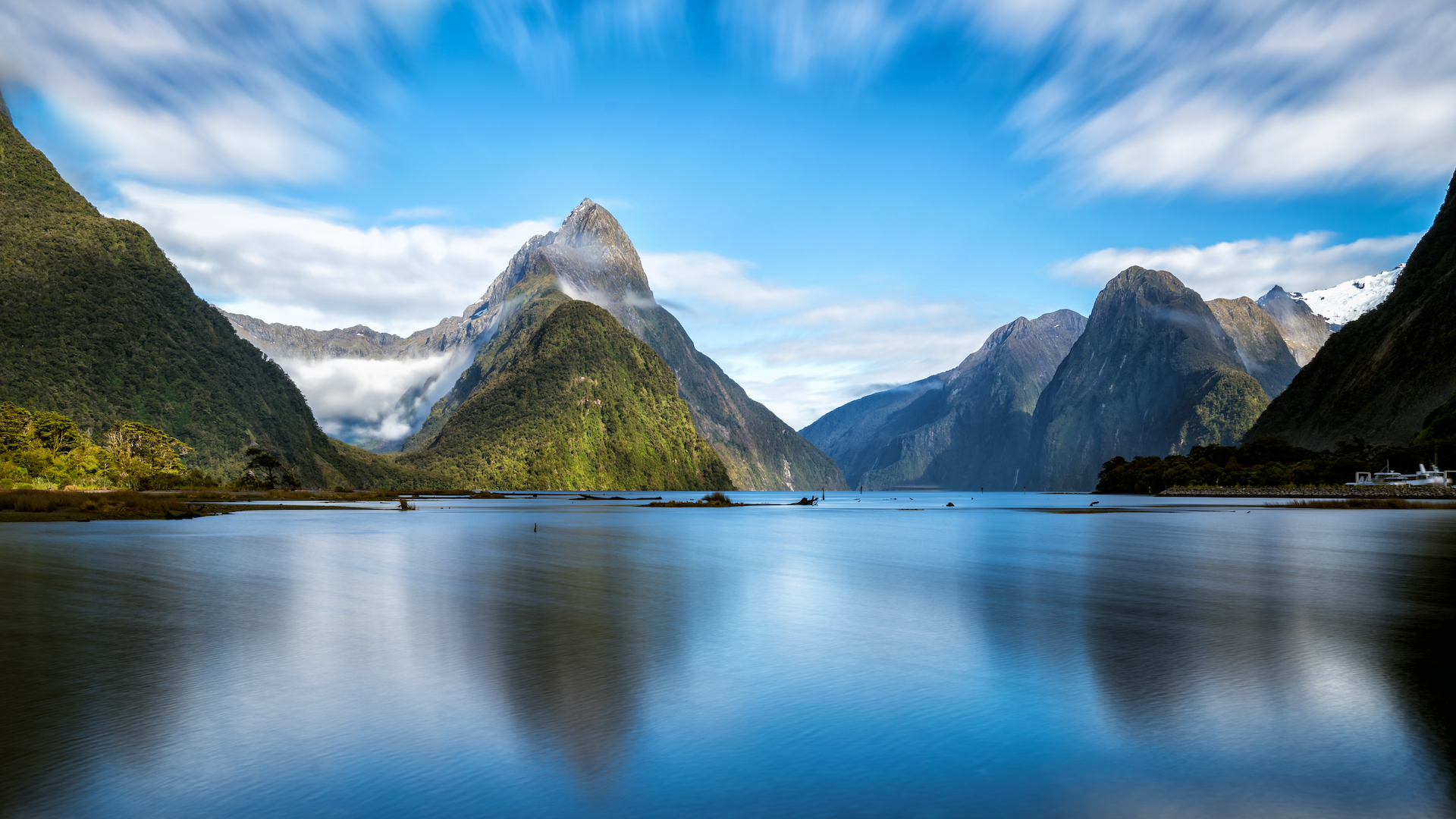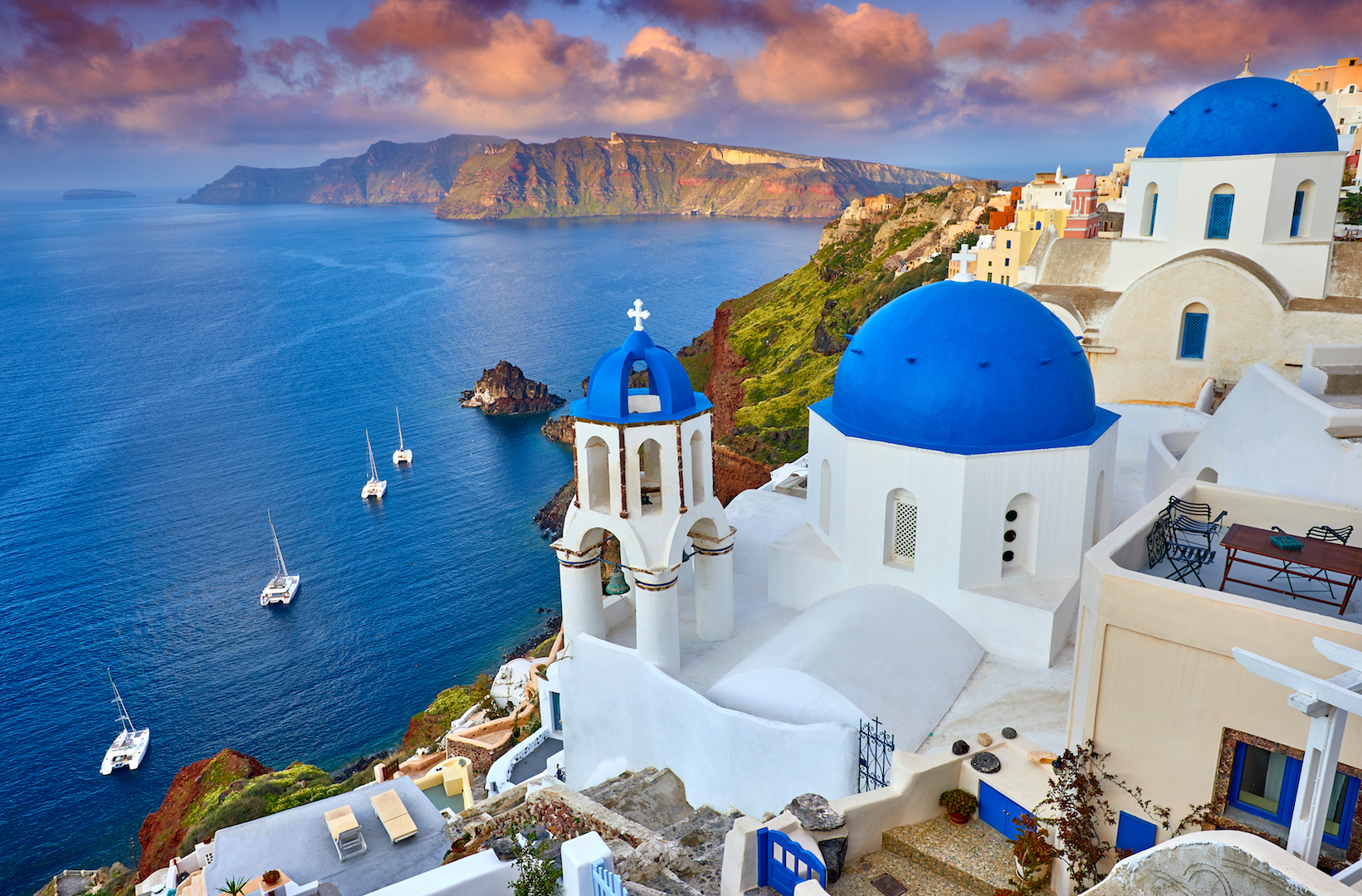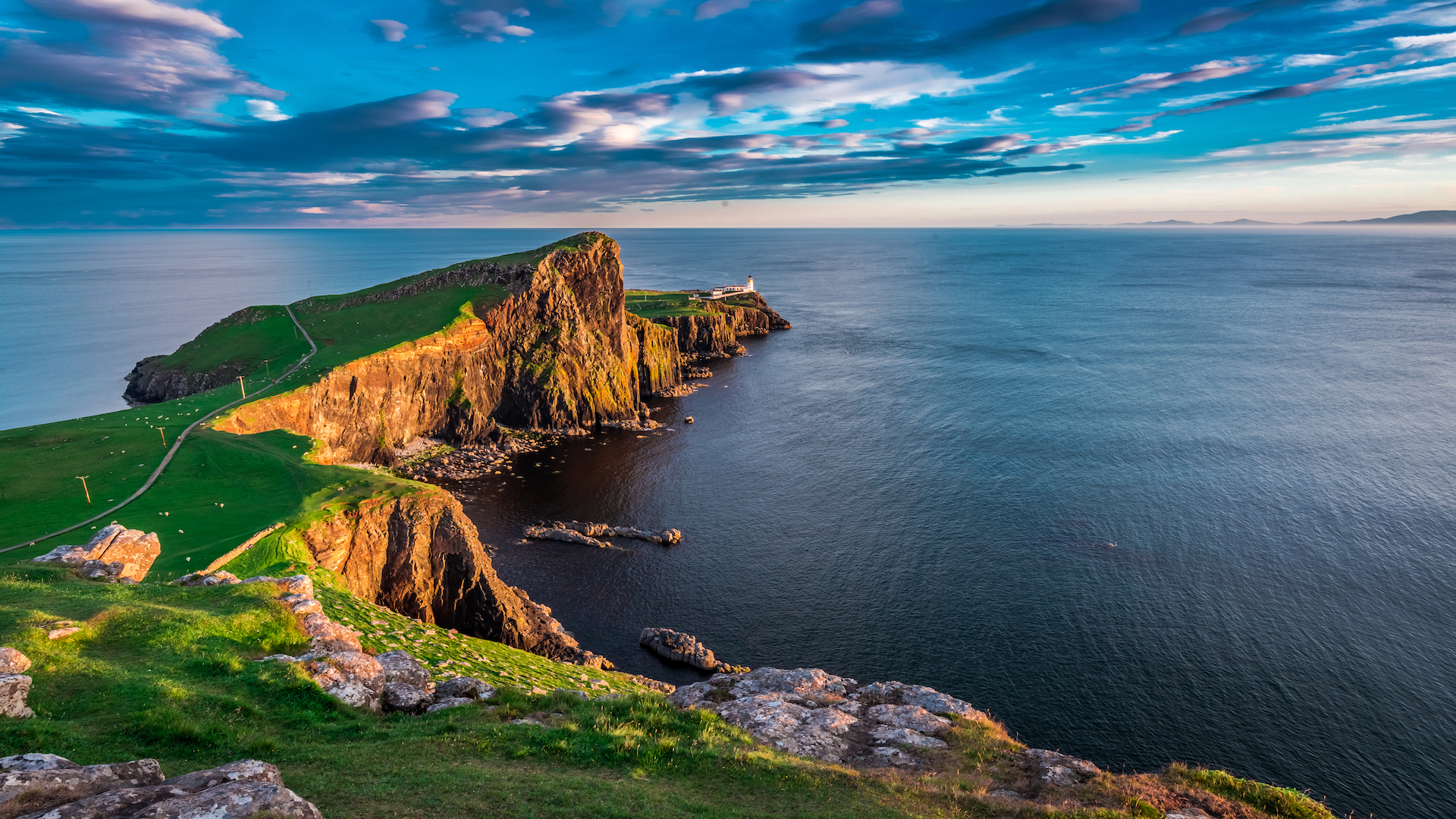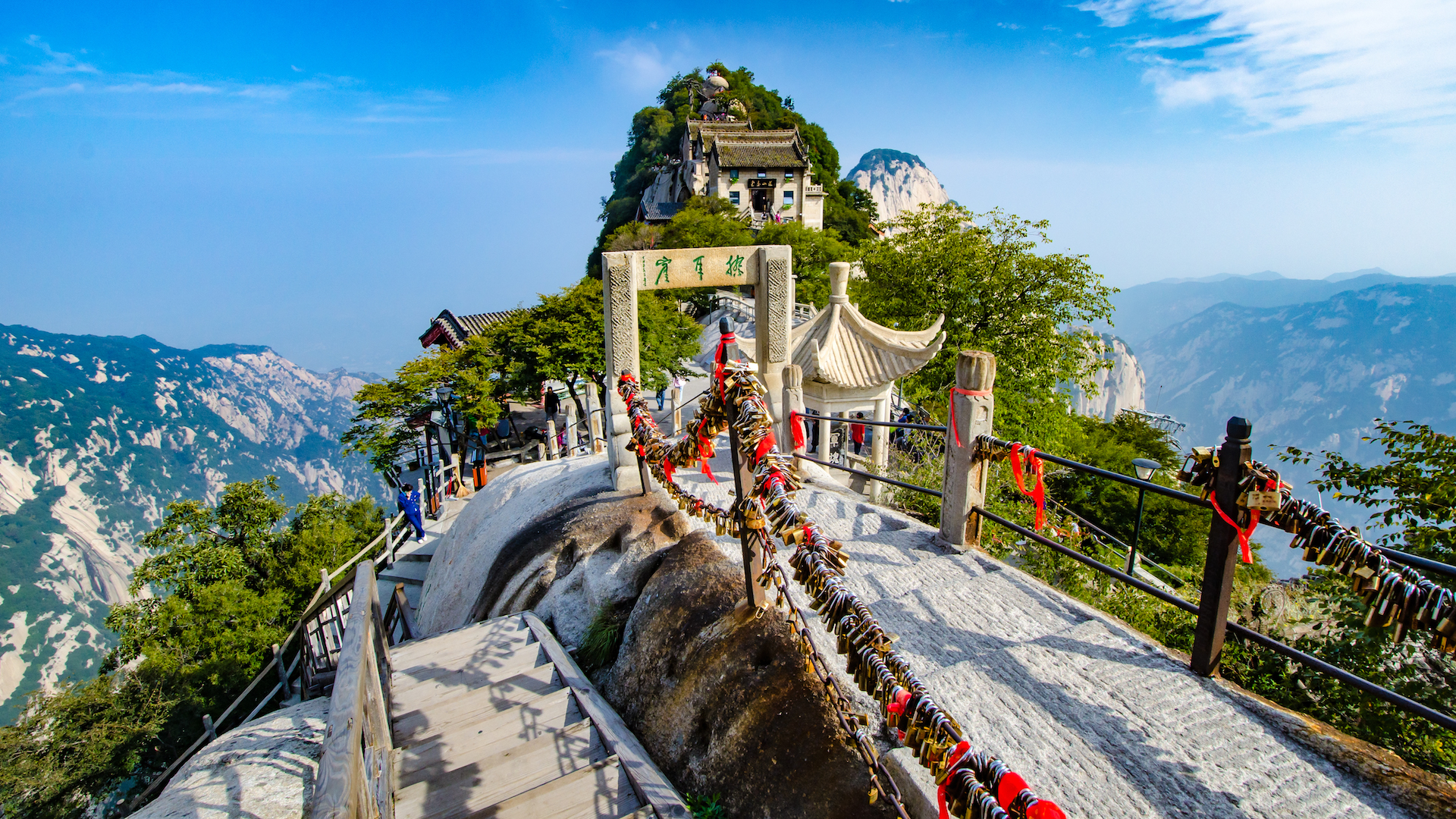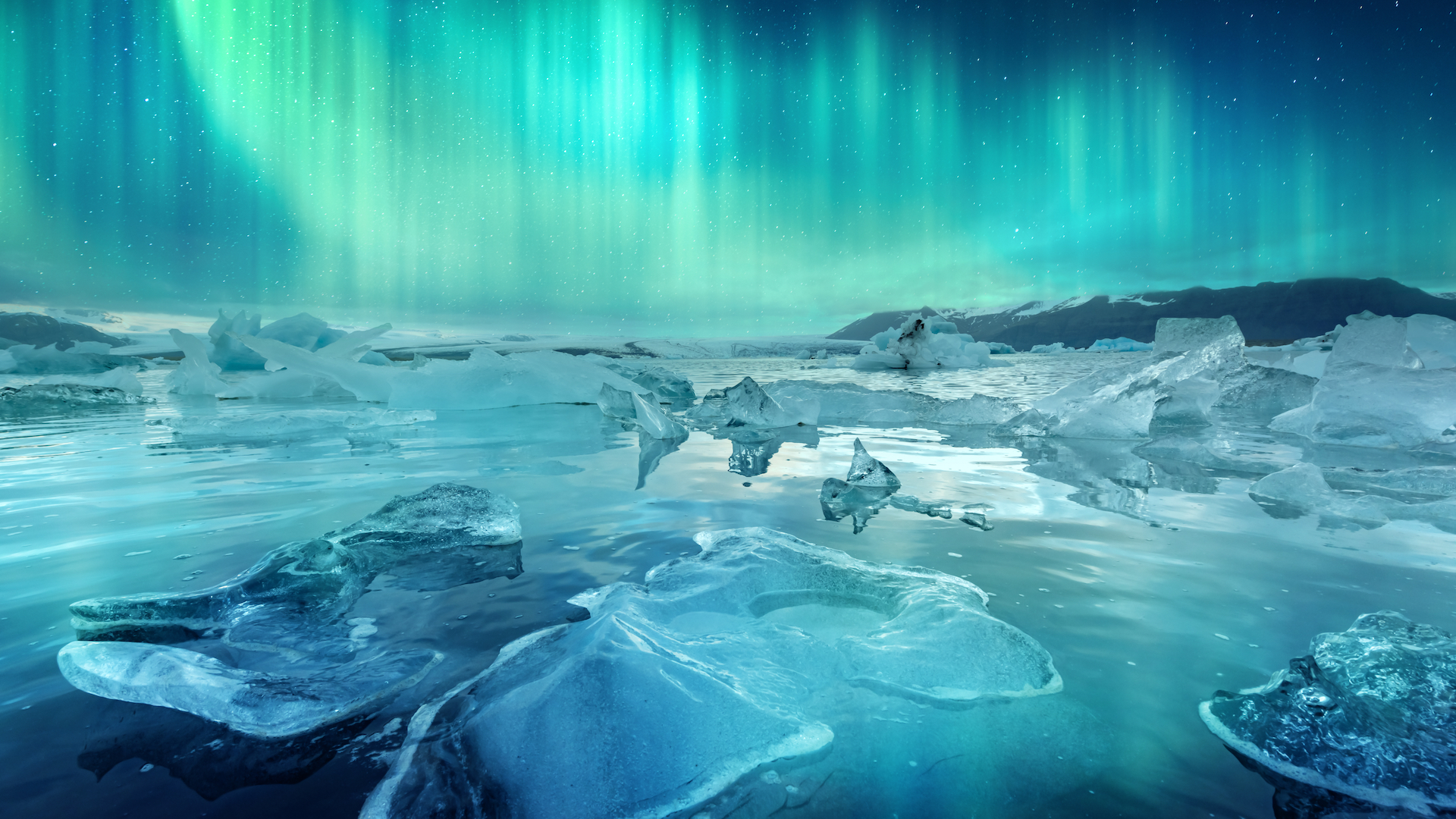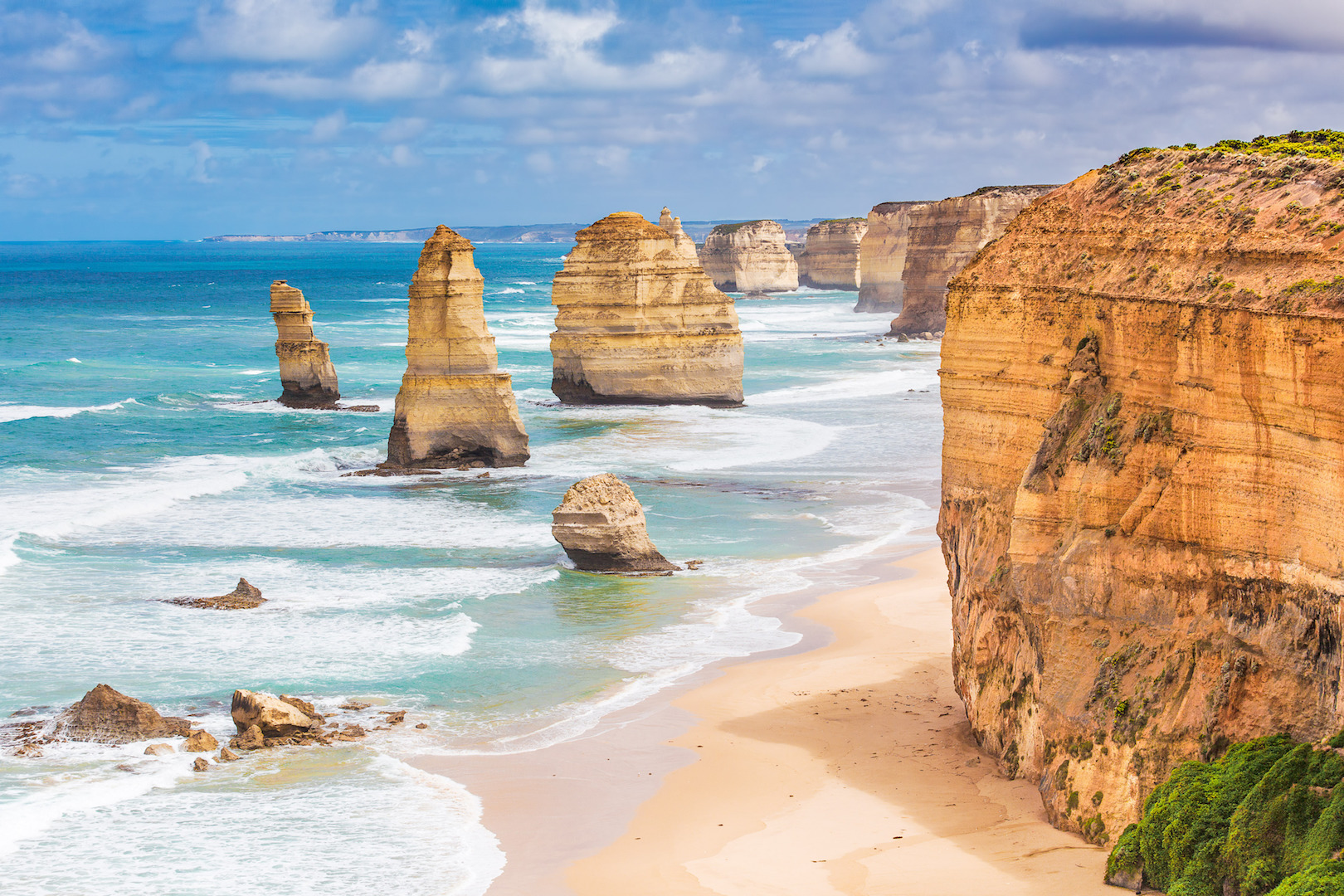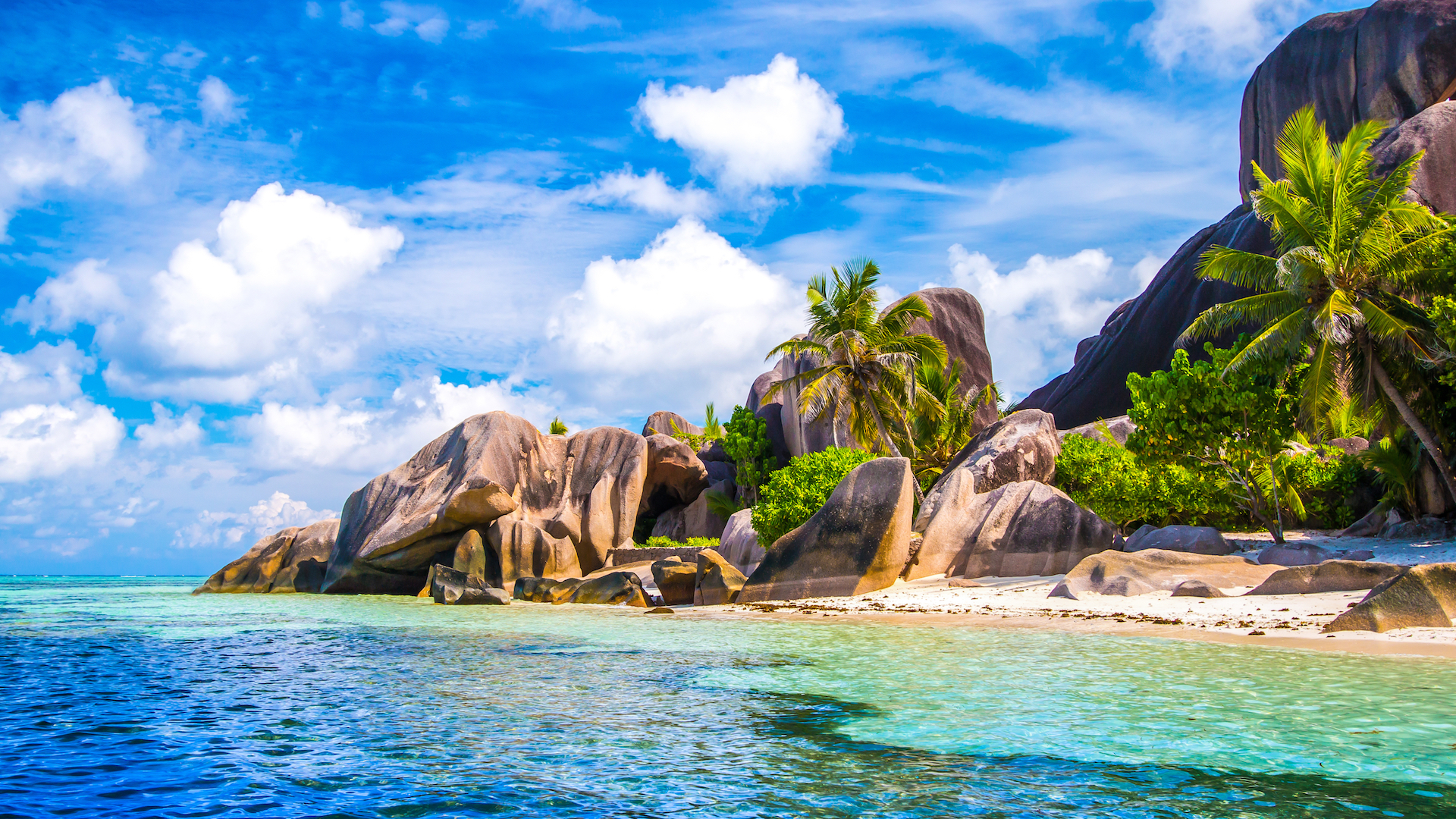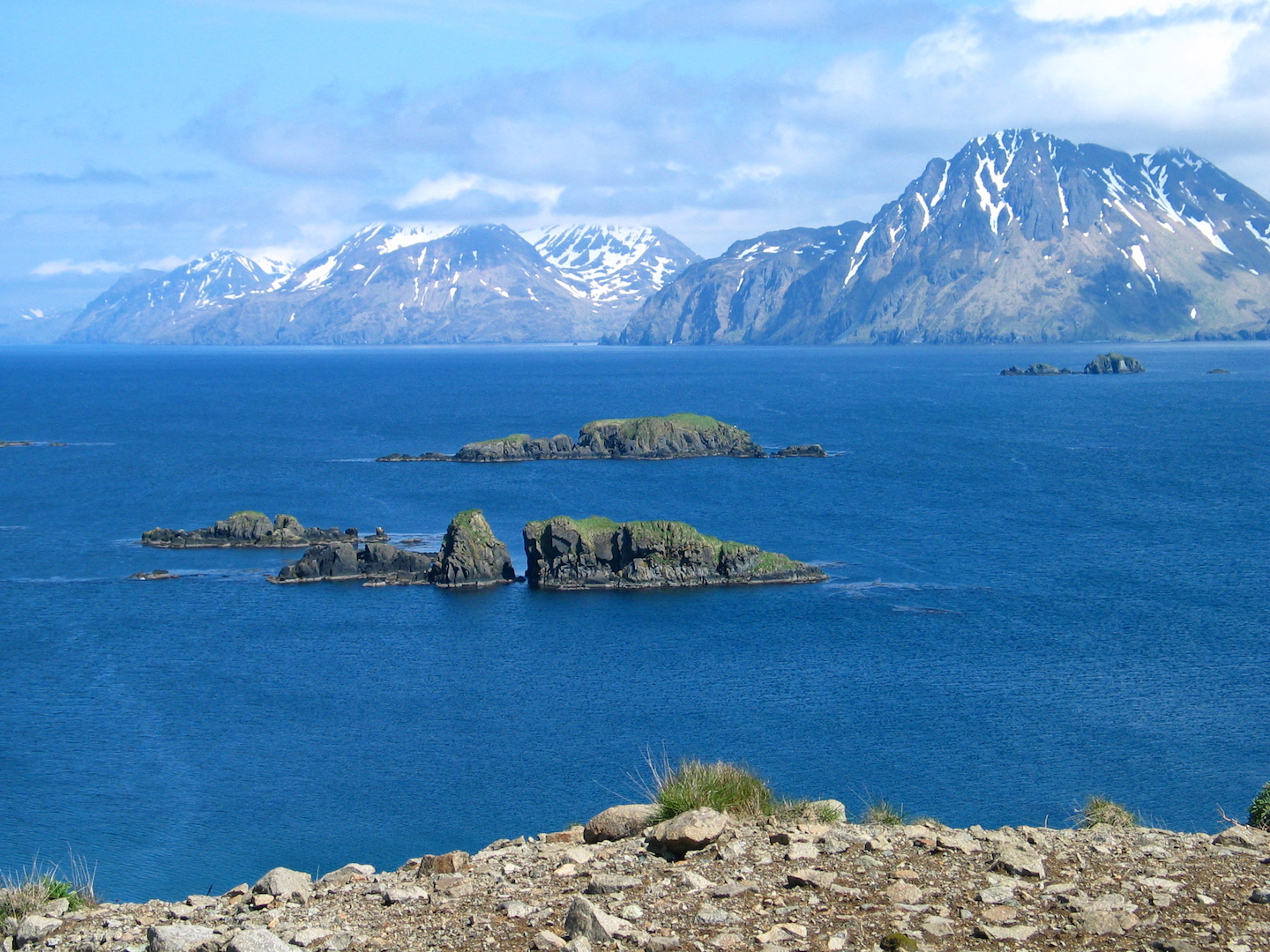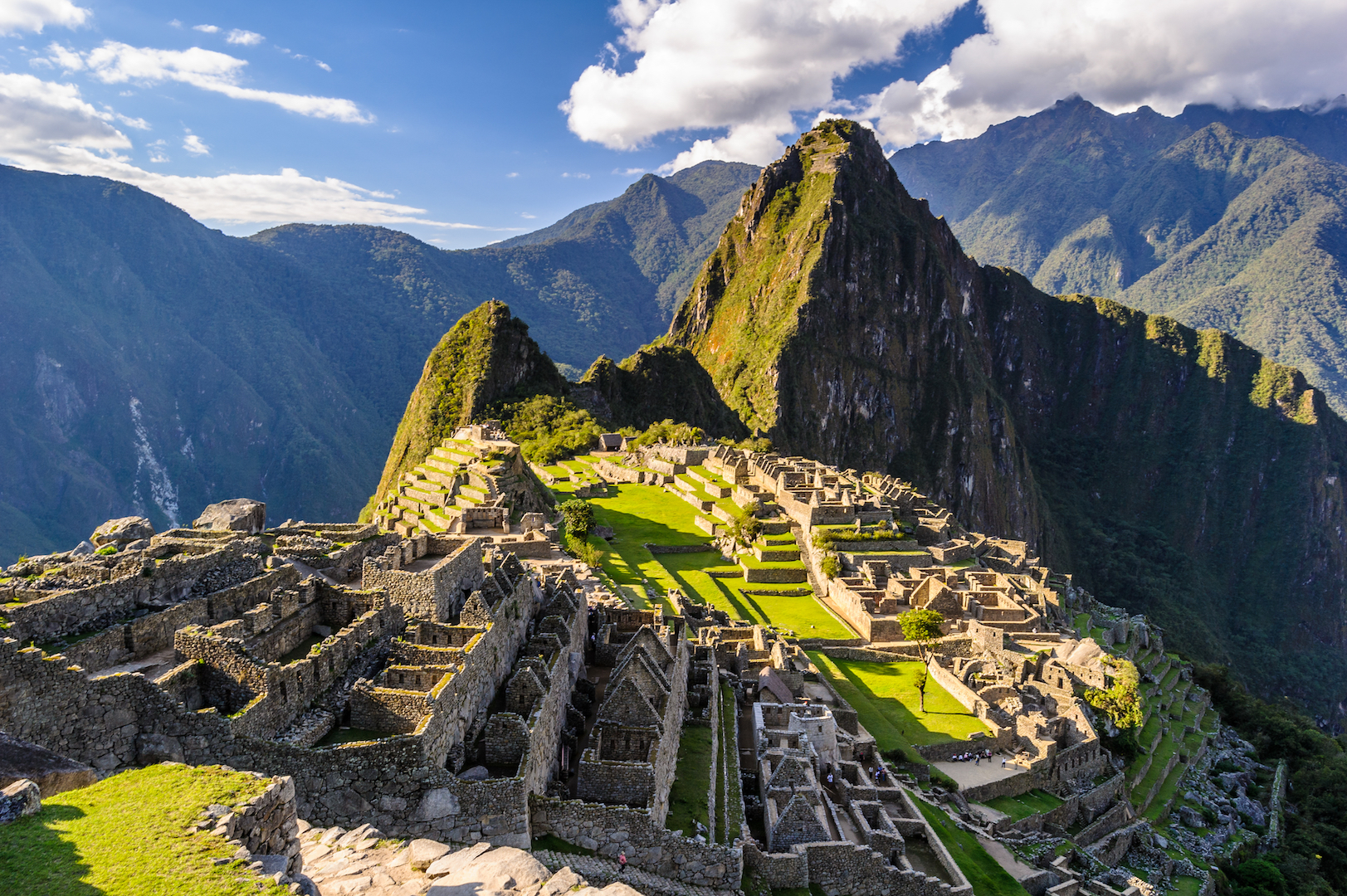The most beautiful places in the world
Here are 10 of the most beautiful places on Earth — from cascading waterfalls and towering mountains, to tropical islands and picturesque cities.
Despite ills such as pollution, climate change, ecological disasters and the destruction of many wild places, Earth is a beautiful place. From waterfalls and islands to forests and mountains, our planet boasts myriad natural wonders that can amaze even the most jaded observer. But it also boasts equally dazzling human-made wonders, like picturesque cities and unique architecture.
Our list of the 10 most beautiful places in the world is subjective, but we think it is eclectic enough to capture the diverse beauty of our planet. If you were to point a camera at any of the places listed here, you'd get a breathtaking image.
1. Milford Sound, New Zealand
The South Island of New Zealand boasts one of the world's most picturesque fjords. Known as Milford Sound, it is located along the Island's southwest coast, about 60 miles (96 kilometers) northwest of Queenstown, which is a resort center famous for its skiing and outdoor activities.
Milford Sound is the crown jewel of New Zealand's Fiordland National Park, which is the largest of the island nation's 14 national parks, according to the New Zealand Department of Conservation. Beginning at a small village, also called Milford Sound, the fjord zigzags through a lush, green environment for nearly 10 miles (16 km) before opening into the Tasman Sea, situated between Australia and New Zealand. Buttressed by towering sheer cliffs and high mountain peaks, several of which soar to heights of 3,940 feet (1,200 meters), Milford Sound is a unique ecosystem. It is one of the wettest places on Earth, receiving an estimated average yearly rainfall of 22 feet (7 m). Mosses, lichens and ferns thrive in the wet environment and grow in abundance. Beech (Nothofagus sp.), an iconic tree of the Southern Hemisphere, is ubiquitous, but equally profuse are other trees, such as the podocarp (Podocarpus sp.), or native conifer, and the kahikatea (Dacrycarpus dacrydioides), or white pine, which can reach heights of 196 feet (60 m). Ferns, however, are among Milford Sound's most common plants. Several fern species live in the environment, including the silver fern (Alsophila dealbata), another one of New Zealand's most iconic plants.
As is the case with all fjords, Milford Sound was formed as the result of glacial activity occurring over several million years. As the glaciers coalesced, flowing down from the South Island's Southern Alps mountain range, they made deep cuts in the surrounding landscape. During warmer periods, the glaciers retreated, giving the fjord its unique geography and configuration.
2. Santorini, Greece
The whitewashed, blue-capped houses of the Greek village of Fira are typical of the many picturesque villages of modern-day Greece. But these particular houses, along with those of Fira's sister city Oia, are perched impossibly on the ridge of a caldera and command a bold, panoramic view of the surrounding Aegean Sea.
The caldera is the remnant of the ancient island of Thera, now called Santorini. Situated in the southern Aegean Sea and forming the southernmost of the Cyclades group of islands, Santorini is a volcanic island located 120 miles (200 km) southeast of the Greek mainland. It is famous for its rugged landscape, towering cliffs displaying distinct and colorful geologic layers, volcanic beaches, romantic sunsets and 360-degree view of the deep-blue Aegean Sea.
Get the world’s most fascinating discoveries delivered straight to your inbox.
Related: In photos: 'Most beautiful lakes' discovered beneath Aegean Sea
Santorini is also famous for the catastrophic volcanic eruption that occurred 3,600 years ago, during the height of the Minoan civilization, according to the World History Encyclopedia. The eruption destroyed much of the island, spewing a massive cloud of ash and debris into the air, creating a water-filled caldera and breaking the island into several separate islands. The eruption also destroyed the ancient village of Akrotiri, the most famous Minoan settlement outside Crete. First excavated in 1967, it is now a well-known archaeological site, some of it partially reconstructed but much of it, like Pompeii, still preserved under a thick layer of ash. The site is famous for its well-studied frescoes, or wall paintings, which depict fishermen, boats, dolphins and well-manicured Minoan ladies of high rank.
Santorini is a major tourist destination, and the archaeological site of Akrotiri is a UNESCO World Heritage Site.
3. Isle of Skye, Scotland
The Isle of Skye has a long history of appearances in songs, stories, novels and poetry. Novelist and poet Walter Scott used the picturesque location as the setting of his epic poem "The Lord of the Isles," and Sir Harold Boulton's romantic ballad "The Skye Boat Song" tells the story of Bonnie Prince Charlie's flight from the Scottish mainland to Skye after his defeat at the Battle of Culloden in 1746. It is unclear where the name Skye comes from, but some sources, such as the Gazetteer of Scotland, claim it comes from the old Norse word "sky-a," meaning "cloud island," likely in reference to the fog that often enshrouds the island.
Skye is the largest and northernmost of Scotland's Inner Hebrides, a group of islands located on the country's west coast. The island is roughly 50 miles (80 km) wide from east to west and is made up of a hodgepodge of moors, blue lochs, windswept coastline, fields of heather, stark medieval castles and craggy mountains. Its climate is wet, windy, cool and frequently overcast. But when the sun breaks out, the island is aglow with rainbows, sparkling lochs and some of the most beautiful coastal vistas in the British Isles. "In a country famous for stunning scenery, the Isle of Skye takes top prize," according to the Lonely Planet travel guide.
Related: An ancient Nessie? Long-neck dinos once prowled Scottish lagoon.
North of Portree, the island's main town, is a cluster of pinnacle-like rocks known as the Old Man of Storr. Farther north is Kilt Rock, a sheer coastal cliff of sedimentary and igneous rock that draws a constant stream of sightseers, many having come to see Mealt Falls, a cascade that drops 164 feet (50 m) straight down to the water. Near the top of the list of jaw-dropping attractions, however, is Spar Cave, a cathedral-like sea grotto filled with calcium carbonate formations. It was a major tourist attraction during Victorian times and continues to draw adventurous hikers. All of these can be viewed at the official Isle of Skye tourist site.
4. Huashan, China
"Shan" is Mandarin for "mountain," and hua means "splendid" or "magnificent." Huashan, a towering mountain located near the city of Huayin in China's Shaanxi province, about 74 miles (120 km) east of Xi'an, lives up to its moniker.
It consists of five separate peaks, the tallest of which, South Peak, rises to 7,070 feet (2,155 m). The mountain is composed primarily of Mesozoic-era granite upthrust as the result of geologic faulting over millions of years, according to UNESCO. This created the sheer rock faces that characterize the mountain and plunge precipitously to the valley below. The surrounding flora is rich and varied. Mosses, lichens and shrubs characterize the understory, while several species of pine clinging precariously to steep rock faces and sheer cliffs form the overstory.
Taoists, who are practitioners of the ancient Chinese religion of Taoism, have cherished Huashan for centuries, and it is considered one of China's most sacred mountains. Several Taoist temples dot the mountain's slopes and peaks. The earliest temple, the Shrine of the Western Peak, dates back to the second century B.C.
The mountain is also a major tourist destination. Many people from around the world venture to climb the South Peak, an ascent to the top of the mountain that some have dubbed the "most dangerous hike in the world." The initial ascent is easy enough; it begins relatively flat but gradually transitions to stone steps, which then give way to a wooden plank that hugs the mountainside with a series of chains for handholds. The dangerous trail is only about 1 foot (0.3 m) wide and is known as the "plank walk in the sky."
5. Prague, Czech Republic
The capital of the Czech Republic, Prague is known as the "City of a Hundred Spires," a name that references its famous castles, cathedrals, Gothic and Baroque architecture, and medieval squares and bridges. It is home to 1.3 million people.
The area around Prague is a region known as Bohemia, which has been settled for many millennia, first by Paleolithic peoples and much later by the Celts. But Prague did not acquire the rudiments of a city until the ninth century A.D., according to Encyclopedia Britannica. During the medieval period, the city grew in size, scope and renown, becoming a major city of political and cultural influence in the 14th century. In 1348, the Holy Roman emperor Charles IV founded Charles University in Prague, the first such center of learning in central Europe. And during the latter Middle Ages and into the Renaissance, Prague played a major role during the Reformation, a period of intense religious ferment that gave rise to Protestantism. Under the influence of Catholic Church critics like Jan Hus, Prague became a hotbed of opposition to Roman Catholicism.
The Vltava River runs north to south as it meanders through the city, passing such famous landmarks as the Prague Astronomical Clock, the Vysehrad Museum and the famous Charles Bridge, a medieval stone bridge that links Prague's Old and New Towns and is famous for its Baroque statuary of prominent saints.
Perhaps the most picturesque of Prague's buildings, however, is Prague Castle, which sits atop a hill and dominates the city's skyline. It was built in the ninth century and was expanded upon over subsequent centuries. Today, it is the official residence of the president of the Czech Republic.
In 1992, Prague's historic city center was added to UNESCO's World Heritage List.
6. Jökulsárlón, Iceland
The first thing you notice about Iceland's largest glacial lagoon is the dazzling blueness of the water. It has a crystalline quality that is mesmerizing and otherworldly. Brilliant white icebergs, broken off of the nearby glacier, float about, resembling clouds drifting in the sky.
Jökulsárlón, translated as "glacial river lagoon," is Iceland's deepest lake, plunging 813 feet (248 m) below the surface, according to Earth Observatory, a NASA-affiliated site. It covers a surface area of 7 square miles (18 square km) and borders the coast, so at high tide, Atlantic Ocean water spills into the lagoon. Jökulsárlón is part of Vatnajökull National Park, located near the town of Hofn in the southeast part of the country. The park derives its name from Vatnajökull glacier, which is Iceland's largest ice cap and the second-largest ice cap in Europe, after the Severny Island ice cap in Novaya Zemlya, Russia.
Related: Drone footage reveals dramatic Iceland volcanic eruption
Jökulsárlón formed fairly recently, between 1934 and 1935, when meltwater from Vatnajökull glacier rushed into the lagoon, forming a lake. It has been expanding ever since. Today, the expansion of Jökulsárlón is accelerating as a result of climate change.
The lagoon is a major tourist attraction, drawing visitors from all over Europe, Asia and the United States. They come to see the icebergs, the wildlife and the amazing vistas, especially Vatnajökull glacier, which rises to 3,000 feet (910 m) and provides a dramatic backdrop to the striking blue lagoon. A plethora of seabirds — including terns, skuas, gulls and puffins — call the area home, and seals are frequent visitors to the lagoon.
Jökulsárlón and the surrounding area became part of Vatnajökull National Park in 2008. The Park is currently a UNESCO World Heritage Site.
7. Great Ocean Road, Australia
Flanked on the south by the tempestuous Southern Ocean, the Great Ocean Road is Australia's most scenic highway. It passes by some of the country's most amazing vistas and natural landmarks, and is on Australia's National Heritage list, a list of places deemed to be of outstanding historical, natural and cultural significance to Australia.
The Great Ocean Road runs along the southeast coast, from Torquay in the east to Allansford in the west. It covers a length of 151 miles (243 km) and parallels the southern edge of the continent for most of the way, though it occasionally deviates to cut inland and zigzag around a landform or natural formation. The entire route takes about 9.5 hours, and tourists typically spend three days doing the drive.
Related: In photos: Travel Australia's Great Ocean Road
The road winds through coastal scenery for most of its length, running along cliff tops, skirting beaches and coves, and passing through rainforests and by waterfalls. Highlights include the Otway rainforest canopy, which takes visitors high up through the canopy of a myrtle beech (Nothofagus cunninghamii) forest, and the Grotto, a stretch of limestone coast that has been eroded into fantastical shapes and formations. Perhaps the most spectacular attraction, however, is a series of limestone sea stacks called the Twelve Apostles. These rock formations were part of the mainland 20 million years ago but have eroded over time and now form pinnacles just offshore.
The idea of creating the Great Ocean Road grew out of a desire to commemorate the Australian soldiers who died during World War I, according to SBS News, an Australian news site. Construction of the road began in 1918, after a survey crew laid out the route the previous year. Many members of the construction crew were servicemen who had returned from the war and needed jobs. The road was constructed piecemeal, and it was completed in 1932.
8. Seychelles
In 1881, the famous British general Charles "Chinese" Gordon thought he had stumbled across the biblical Garden of Eden — literally. He claimed it was on an island in the middle of the Indian Ocean, now known as Praslin in the Republic of Seychelles.
Seychelles is an archipelago of 115 islands nearly 1,000 miles off Africa's east coast. The islands are the epitome of postcard perfect: Stately palm trees sway above pristine white beaches and brilliant turquoise water.
Most of the islands are granite, according to One Earth Philanthropy, a non-profit environmental group, although several islands are also coral atolls. The Aldabra Group of islands includes Aldabra Island, which is the world's second-largest raised coral atoll and a UNESCO World Heritage Site. It is home to the endemic Aldabra giant tortoise (Aldabrachelys gigantea), which, like the Galapagos giant tortoise, is an example of island gigantism, an evolutionary process whereby certain island-dwelling animals grow to very large sizes.
Seychelles is a major tourist destination with numerous nature preserves and marine parks.
9. Aleutian Islands
A cold, windswept island chain in the north Pacific Ocean is hardly the first location that springs to mind when contemplating the world's most beautiful places. But the Aleutian Islands, located between 51° and 55° N latitude, is a special place that defies all expectations and assumptions. Though beset by fierce winds, thick fog and heavy rainfall, the islands have mystical charm. A haven for seabirds and marine life, the islands are a wonderland of rugged volcanoes and snowcapped peaks surrounded by a vast expanse of deep blue ocean.
The Aleutians form the northern extension of the Pacific Ring of Fire, extending in an arc westward from the Alaskan Peninsula for 1,200 miles (1,900 km) to the Russian Kamchatka Peninsula. The Aleutians consist of more than 70 islands, including 14 large volcanic islands, 55 smaller islands and several islets. They are located where the Pacific Plate sinks below the North American Plate, creating an active subduction zone. Here, the molten lava bubbles up to the surface, and several of the islands contain active volcanoes. A group of scientists recently proposed that the Aleutian Islands are the interconnected vents of a much more massive underwater caldera, Live Science previously reported.
Unalaska is the best-known island in the chain and the only one with a permanent population. Attu Island, the westernmost of the Aleutian Islands, is a premier destination for bird-watchers, containing countless resident and migrant seabirds and numerous nesting sites and colonies. Attu Island is also famous for its role in World War II: In May 1943, American and Japanese forces clashed in a bloody month-long battle that culminated in an Allied victory and the withdrawal of Japanese forces from the island chain.
10. Machu Picchu
Machu Picchu is an ancient city that sits high up in the mountains, surrounded by gauzy wisps of cloud. The extreme altitude and surrounding backdrop of the vegetation-clad slopes of the Andean foothills lend the air an ethereal quality.
Machu Picchu is located in the Andes mountains of southern Peru, in the craggy heights above the Urubamba Valley, also called the Sacred Valley. Archaeologists think Machu Picchu was constructed in the mid-1400s under the direction of Pachacuti Inca Yupanqui, the ninth ruler of the Inca. The city was built as a citadel for Inca royalty and was occupied for nearly a century until it was abandoned around the time of the Spanish conquest in the 16th century. It contains numerous palaces, residences and stone temples, including the Temple of the Sun and the Temple of the Three Windows, and is surrounded by expertly made stone walls. The nearest modern city, Cuzco, is 50 miles (80 km) to the southeast.
After its abandonment, the citadel fell into disuse, and as thick vegetation closed in around the site over the centuries, it was reclaimed by the jungle. Although it was well known by the local populace, American explorer Hiram Bingham brought it to international attention in 1911, according to Encyclopedia Britannica.
Today, Machu Picchu is not only one of the most important archaeological sites in South America but also a major tourist destination and a UNESCO World Heritage Site.
Originally published on Live Science.
Tom Garlinghouse is a journalist specializing in general science stories. He has a Ph.D. in archaeology from the University of California, Davis, and was a practicing archaeologist prior to receiving his MA in science journalism from the University of California, Santa Cruz. His work has appeared in an eclectic array of print and online publications, including the Monterey Herald, the San Jose Mercury News, History Today, Sapiens.org, Science.com, Current World Archaeology and many others. He is also a novelist whose first novel Mind Fields, was recently published by Open-Books.com.


